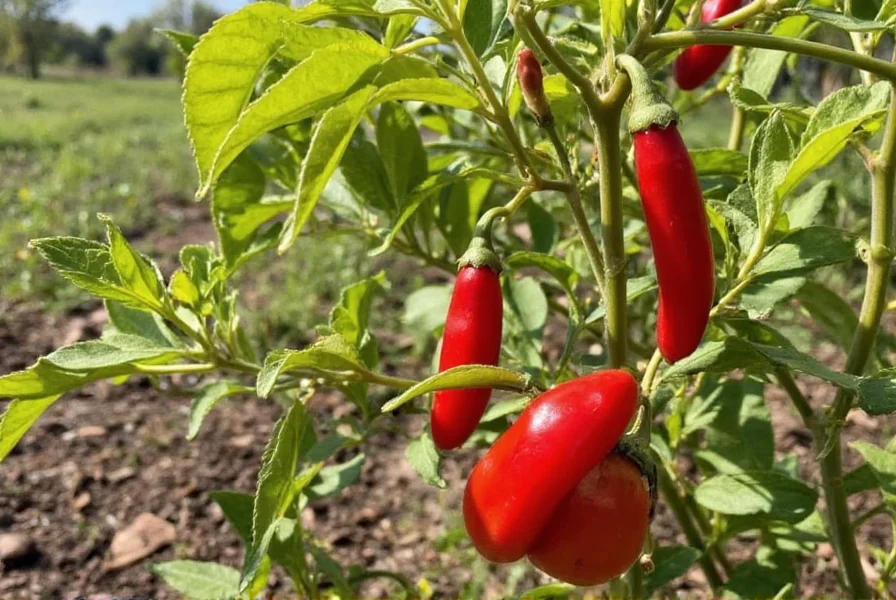Essential Nutrients for Healthy Pepper Growth
Understanding pepper plant nutrient requirements is fundamental for successful cultivation. Peppers need three primary macronutrients: nitrogen (N), phosphorus (P), and potassium (K), plus secondary nutrients like calcium, magnesium, and sulfur. During vegetative growth, peppers benefit from moderate nitrogen to develop strong stems and leaves. As plants transition to flowering and fruiting stages, phosphorus becomes critical for flower development and potassium supports fruit set and disease resistance.
Calcium deficiency commonly causes blossom end rot in peppers, particularly in container gardening situations. Maintaining consistent soil moisture helps prevent this issue, as calcium uptake depends on steady water movement through the plant. Magnesium deficiency appears as yellowing between leaf veins and can be corrected with Epsom salt applications at 1 tablespoon per gallon of water.

Organic vs. Synthetic Fertilizer Options
Organic fertilizers provide slow-release nutrition that improves soil structure over time. Composted manure, applied at 1-2 inches across garden beds before planting, offers balanced nutrition. Fish emulsion (5-1-1) provides quick nitrogen availability when plants show pale leaves. Bone meal (3-15-0) boosts phosphorus levels specifically for flowering. Seaweed extracts contain trace minerals that enhance overall plant vitality.
Synthetic fertilizers deliver precise nutrient ratios with immediate availability. Water-soluble options like 5-10-10 allow for controlled application during critical growth phases. Time-release granular fertilizers provide consistent nutrition over several weeks, reducing application frequency. When using synthetic options, always follow label instructions to prevent root burn from excessive salts.
| Fertilizer Type | NPK Ratio | Application Timing | Frequency |
|---|---|---|---|
| Compost | 1-1-1 | Before planting | Once |
| Fish Emulsion | 5-1-1 | Vegetative growth | Every 2-3 weeks |
| Bone Meal | 3-15-0 | Flowering stage | Once |
| Balanced Liquid | 5-10-10 | Flowering & fruiting | Every 2 weeks |
Optimal Fertilizing Schedule for Pepper Plants
Timing fertilizer applications correctly maximizes pepper yield and quality. At planting time, incorporate balanced organic matter like compost into the soil. Wait 3-4 weeks after transplanting before applying additional fertilizer to avoid overwhelming young roots. Begin regular feeding when first flowers appear, typically 4-6 weeks after planting.
For container-grown peppers, which have limited soil volume, fertilize more frequently but at half-strength. Container gardening pepper fertilizer requirements increase because nutrients leach out with regular watering. Monitor plants for visual cues: dark green leaves with white flowers indicate proper nutrition, while purple undersides of leaves suggest phosphorus deficiency.
Avoiding Common Pepper Fertilizing Mistakes
Over-fertilizing represents the most frequent error in pepper cultivation. Excessive nitrogen produces lush foliage but few fruits—a critical consideration for gardeners seeking maximum harvest. If your pepper plants show vigorous leaf growth but minimal flowering, reduce nitrogen applications immediately.
Applying fertilizer to dry soil risks root burn. Always water plants thoroughly before and after fertilizer application. Morning applications prevent potential leaf scorch from concentrated nutrients in direct sunlight. For best results with homemade fertilizer for pepper plants, start with small test batches to gauge plant response before treating your entire crop.
Tailoring Fertilizer to Pepper Varieties
Different pepper types have varying nutritional demands. Sweet bell peppers require consistent nutrition throughout their longer growing season. Hot pepper varieties like jalapeños and habaneros often need less nitrogen once established, as excessive feeding can reduce capsaicin production and heat level. Small-fruited ornamental peppers benefit from higher potassium to support their abundant flowering.
Soil testing provides the most accurate foundation for your fertilizer schedule for pepper plants. Most peppers thrive in slightly acidic soil (pH 6.0-6.8). If your soil test reveals imbalances, amend accordingly before planting. In regions with heavy rainfall, more frequent fertilization may be necessary due to nutrient leaching.
Troubleshooting Pepper Nutrient Issues
Yellowing leaves often indicate nitrogen deficiency, especially in older leaves first. Address this with fish emulsion or blood meal applications. Blossom end rot, characterized by dark, sunken spots on fruit bottoms, stems from calcium deficiency exacerbated by irregular watering—not necessarily lack of calcium in soil.
Interveinal chlorosis (yellowing between veins) suggests magnesium deficiency, correctable with Epsom salt sprays. Purple leaf discoloration indicates phosphorus deficiency, requiring bone meal or rock phosphate applications. Always confirm nutrient issues through visual symptoms before adjusting your best fertilizer for bell peppers regimen.
FAQ
When should I start fertilizing pepper plants after transplanting?
Wait 3-4 weeks after transplanting before applying fertilizer to allow root establishment. Begin regular feeding when first flowers appear, typically 4-6 weeks after planting. Early fertilization can damage young roots and promote excessive leaf growth at the expense of fruit production.
Can I use tomato fertilizer for pepper plants?
Yes, tomato fertilizer generally works well for peppers since both are fruiting plants with similar nutrient requirements. Look for formulas with balanced NPK ratios around 5-10-10 that emphasize phosphorus and potassium during flowering and fruiting stages. Avoid high-nitrogen tomato fertilizers intended for leafy growth.
How often should I fertilize container-grown peppers?
Container-grown peppers need more frequent feeding—every 1-2 weeks with half-strength liquid fertilizer. The limited soil volume in containers causes nutrients to leach out with regular watering. Watch for visual cues: pale leaves indicate need for nitrogen, while poor flowering suggests phosphorus deficiency.
What are the signs of over-fertilizing pepper plants?
Over-fertilized pepper plants show brown leaf edges, excessive leafy growth with few flowers, and potentially stunted fruit development. In severe cases, fertilizer burn causes wilting despite adequate watering. If you notice these signs of over fertilizing peppers, flush the soil with water and suspend feeding for 2-3 weeks.











 浙公网安备
33010002000092号
浙公网安备
33010002000092号 浙B2-20120091-4
浙B2-20120091-4